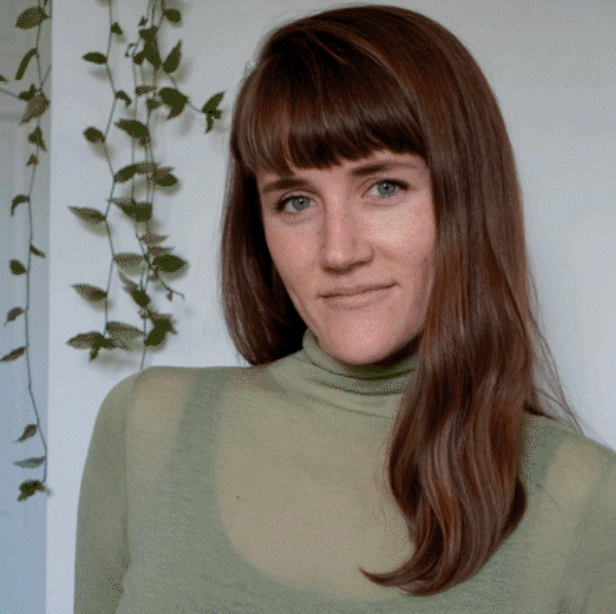
Alisha Norris Jones guides us through a microbial pairing wonderland
Photographed by Adam Detour | Styled by Kendra Smith
As a magazine literally named “culture,” we’d be nowhere without the busiest bodies of the food system: live active cultures. You may recognize the term from your yogurt label, but they’re also in most fermented foods—a group that includes everything from salumi, kimchi, and pickles to wine, bread, and cheese. With this fundamental commonality, it’s no surprise funky foods make some of the best cheese pairings.
“Both cheese and live fermented food undergo lactic fermentation, which makes them a complimentary pair on a chemical level,” says Alisha Norris Jones, who mongers for Chicago’s A Beautiful Rind cheese shop and under her own private label, Immortal Milk. “More poetically, both ferments and cheese are true expressions of terroir and the beauty of microbes. Crown Finish Cave’s Barnburner tastes the way it does due to the microbes present in [their] aging tunnels, the same goes for kombucha and kefir. Burgundian cheeses and wine pair well for a reason; they essentially grew up together.”
Norris Jones has made a name for herself braiding together the anthropological and artistic threads of food to design cheese pairing experiences that verge on the divine. When we asked her about the role “culture” plays in fermentation, she had this to say: “What is culture but community, be it of microbes, punks, or thousands of people? One of the coolest things to me about fermented foods is that they can tell you a person’s politics, background, and temperament by way of their kraut. Miso can take years to ferment, and I think that tells you a bit about the Japanese concept of time and value…folks’ habits are dictated by their culture and their cultures.”
Fermentation vs. Pickling
“Folks use ‘fermenting’ and ‘pickling’ interchangeably…fermentation, the breaking down of glucose in a given food, results in alcohol (wine, beer, mead), lactic acid, and acetic acid (vinegar). Pickling involves submerging foods in acetic acid, while fermented foods, through the process of glycolysis and naturally present bacteria, produce that acidic environment on their own. TLDR, ferments create their own party; pickling needs a hype man.”
For this plate, we asked Norris Jones to create a tasting experience centered on fermentation. But, even if you don’t have access to the items mentioned here, she has a few easy rules you can follow: “I find it easiest to pair ferments on their base notes. Red miso works wonderfully with Gruyere due to the nutty, earthy notes they have in common. The same goes with Époisses and fermented cauliflower.” Norris Jones also recommends picking up a copy of Sandor Ellix Katz’s Wild Fermentation, visiting your neighborhood co-op, throwing fermentation parties, and keeping your mind wide open.
1 Blakesville Creamery Chevre | Origin: Port Washington, WI | Milk: Pasteurized goat
+ Fermented Honey (Butcher & Bee or Anya’s Apothekere)
This farmstead fresh goat cheese is ripened naturally to develop characteristics unique to the Midwest’s local flora. Clean, bright, and mouth-coatingly creamy, it is excellent shot through with a funky fermented honey.
2 Taleggio Ca De Ambros DOP | Origin: Lombardy, Italy | Milk: Pasteurized cow
+ The Brinery’s Oh Gee Kimchi
Master affineur Luca Arnoldi has been making this classic Italian washed rind with his family in Valtaleggio for years. During aging, his Taleggio develops a salty cultured crunch on its tacky rind and a luscious white interior that shines extra bright next to this ginger-heavy kimchi.
3 FireFly Farms Black + Blue | Origin: Accident, MD | Milk: Pasteurized goat
+ Fenugreek Pickled Raisins (see recipe below)
Fermented foods are rarely for the faint of palate, and the same has been said of both blue and goat cheeses. Here, they unite in a tangy trinity that Norris Jones has rounded out with sweet ‘n’ sour pickled raisins, which perfectly complement the fudgy, piquant Black & Blue.
4 Parish Hill Reverie | Origin: Putney, VT | Milk: Raw cow
+ Zymbiotics Sauerkraut and Beetz
Acutely aware of the role of live cultures in cheese, Parish Hill leans into natural processes to encourage wild, native molds and cultivates starter cultures from just four cows (Helga, Abigail, Clothilde, and Sonia). Pair the savory multitudes of their traditional toma, which resembles a stone bloomed with patina, with fermented beets or cabbage.
5 Banner Butter Sea Salt Cultured Cream Butter | Origin: Atlanta, GA | Milk: Pasteurized cow
+ Maldon Salt, Cornichons
High butterfat milk from hormone-free, grass-fed Georgia cows is patiently cultured in small batches for several hours before becoming Banner Butter, giving good bacteria plenty of time to form. The ripened cream is then churned and sprinkled with hand-harvested sea salt for a deceptively simple product that loves a French pickle.
Fenugreek Pickled Raisins
Ingredients
SPICE BLEND
- 1 teaspoon coriander seeds
- 1 teaspoon fenugreek seeds
- ¼ teaspoon cumin seeds
- ¼ teaspoon caraway seeds
RAISINS
- 1 tablespoon extra-virgin olive oil
- ½ cup golden raisins
- 1 tablespoon honey
- 2 tablespoons white balsamic vinegar
- 1 tablespoon Sauternes
Instructions
- Heat the oil in a small saucepan over medium heat and add the spice blend. Let sizzle, stirring, until fragrant.
- Add the raisins and honey and stir well. Reduce the heat to medium-low and cook, stirring, until caramelized (about 2 minutes). Add vinegar and Sauternes and stir for 1 minute. Remove from heat and immediately transfer to a bowl. Cover with plastic wrap and let cool to room temperature.




